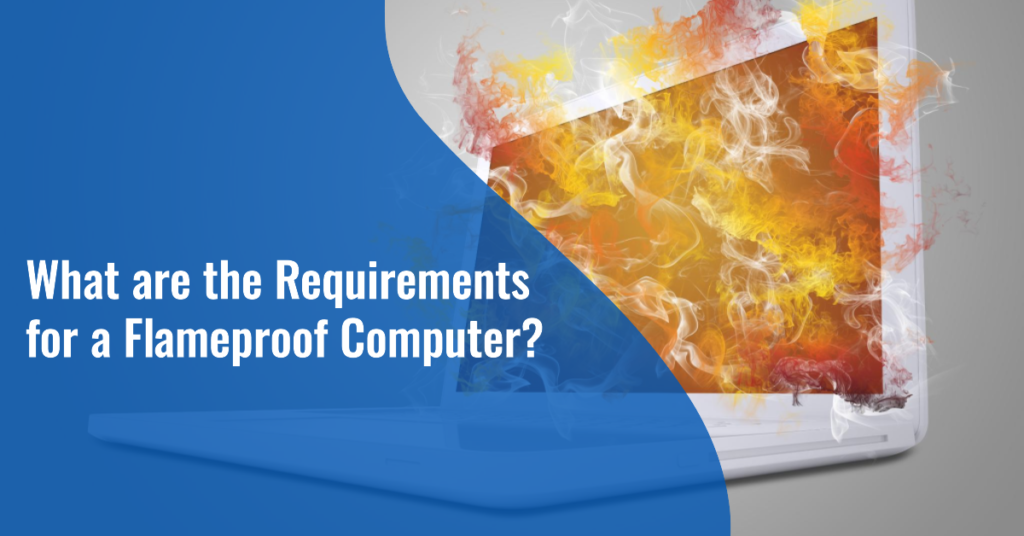
In the heart of industrial operations, the threat of fire is ever-present. It’s a daunting reality that underscores the paramount importance of flameproof computers in these environments. Flameproof computers are specially designed to withstand the blistering heat and flames of a fire without succumbing to the inferno.
In this blog post, we dive deep into the crucial requirements for flameproof computers and explore their pivotal role in industrial safety.
Flameproof computers are forged in the crucible of resilience. They must be able to endure scorching temperatures, with the ability to withstand up to 1,200 degrees Fahrenheit for at least 30 minutes. This quality ensures that even in the direst of fire emergencies, the computer remains intact, preventing further chaos.
The building blocks of these computers are materials that refuse to ignite. Flammability is the enemy, so wood, plastic, and any combustible components are out of the question. Instead, metals or ceramics, with their fire-resistant properties, serve as the foundation of these fortresses.
Containment is key to preventing the spread of fire and smoke. A flameproof computer must be equipped with a sealed enclosure. This critical feature serves as the ultimate safeguard against the insidious spread of flames within the computer’s delicate internals.
Preparedness is essential. Flameproof computers are equipped with integrated fire suppression systems. In the event of a fire, these systems swing into action, swiftly extinguishing the blaze. It’s a proactive approach to crisis management.

Flameproof computers go beyond mere compliance with regulations; they are guardians of safety in industrial settings. They must also be designed with user-friendliness in mind. Ease of operation is paramount, and they should facilitate uncomplicated cleaning and repair, ensuring both their functionality and longevity.
In the volatile landscape of industrial settings, the consequences of neglecting flameproof computers are severe. Without these protective sentinels, the lives of employees and the assets of a business hang in the balance. The risks are not limited to physical injury but also encompass extensive property damage and operational disruptions.
Flameproof computers must adhere to international standards and certifications specific to hazardous environments. These may include ATEX (Europe), IECEx (International), and UL (United States) certifications. Compliance with these rigorous standards is essential for safety and regulatory purposes.
To maintain their reliability, flameproof computers require regular maintenance and testing. This ensures that they continue to meet the stringent safety requirements and operate flawlessly when needed the most. It’s a commitment to safety that extends beyond the initial installation.
As technology advances, the world of flameproof computers evolves too. Emerging technologies are continually enhancing their safety features and performance. Keep an eye on innovations in this space, as they may hold the key to even greater safety in hazardous environments.
In conclusion, the role of flameproof computers in industrial safety cannot be overstated. They stand as stalwart protectors, engineered to withstand the deadliest of fires, and in doing so, protect lives, assets, and the continuity of operations. They are more than devices; they are peacekeepers in a volatile world, ensuring that the flames of danger never compromise the safety of industrial endeavors.
